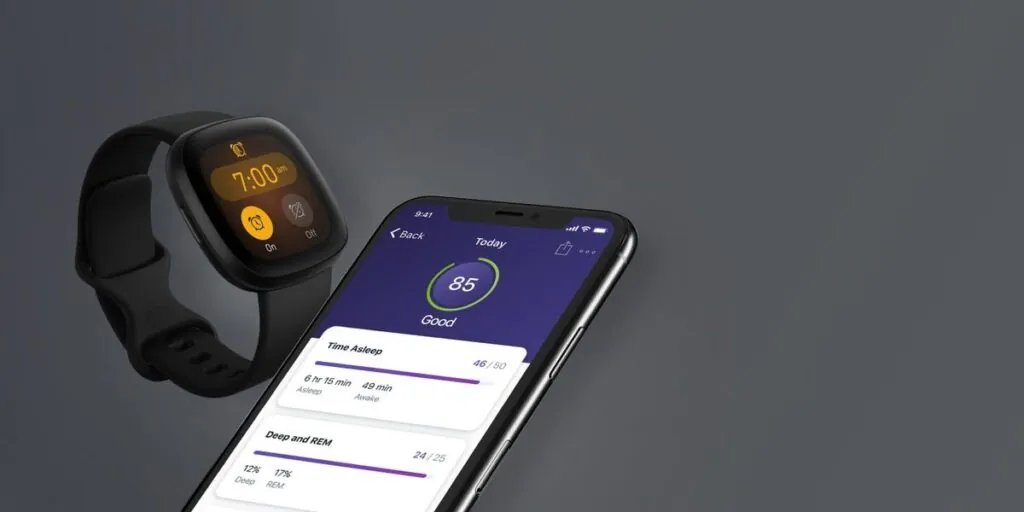Profit Growth using Value- Based Pricing in Healthcare Consumables
Published On 22 July, 2023
Companies in the healthcare consumables industry are constantly seeking innovative strategies to boost profitability while delivering optimal value to their customers. One approach that has gained significant traction in recent years is value-based pricing. This pricing strategy aligns the cost of products and services with the perceived value they bring to customers, allowing companies to enhance their profitability while fostering customer loyalty and satisfaction.
In this article, we will explore the challenges faced by companies in the healthcare consumables industry, explore the sources of value that can be leveraged through value-based pricing, examine real-life case studies, and extract critical takeaways for industry players.
Challenges Facing Healthcare Consumables
The healthcare consumables industry operates within a complex and highly regulated environment. Companies in this sector often encounter a multitude of challenges that impact their profitability, including:
1. Rising Production Costs:
The cost of manufacturing healthcare consumables, including raw materials, labour, and quality control measures, can put pressure on profit margins.
2. Regulatory Compliance:
Adhering to stringent regulatory standards and navigating complex approval processes can lead to delays and increased operational costs.
3. Intense Competition:
The industry is saturated with numerous companies vying for market share, leading to price wars and reduced profitability.
4. Evolving Technology:
Technological advancements require companies to invest in research and development to stay competitive constantly.
5. Changing Healthcare Landscape:
Shifting healthcare policies, insurance reimbursement models, and care delivery changes impact consumables’ demand and pricing.
6. Global Supply Chain Disruptions:
Disruptions in the supply chain, such as pandemics or geopolitical tensions, can lead to shortages and increased costs.
7. Customisation Demands:
Healthcare providers and patients often require customised solutions, increasing complexity and potentially affecting economies of scale.
8. Sustainability and Environmental Concerns:
Increasing focus on sustainability requires companies to adopt environmentally friendly practices, which may entail additional costs.
9. Counterfeit Products:
The proliferation of counterfeit healthcare consumables can erode trust and lead to regulatory challenges.
10. Economic Uncertainty:
Economic fluctuations and changing healthcare budgets can impact demand and pricing strategies for healthcare consumables.

Sources of Value
Value-based pricing hinges on identifying and leveraging the various sources of value that a product or service offers customers. In the context of the healthcare consumables industry, these sources of value can include:
1. Clinical Efficacy:
Demonstrating the clinical effectiveness of a healthcare consumable can position it as a valuable solution that positively impacts patient outcomes. Companies can justify premium pricing by providing robust evidence of the product’s therapeutic benefits.
2. Cost Savings:
Healthcare consumables that contribute to cost savings across the healthcare ecosystem, such as reducing hospital stays or enabling outpatient care, can command higher prices based on the economic value they generate.
3. Innovation and Differentiation:
Companies that introduce unique features or technologies in their products can set themselves apart from competitors, allowing them to justify higher prices based on their distinct advantages.
4. Ease of Use and Convenience:
Products that simplify procedures for healthcare providers or enhance patient convenience can be positioned as premium offerings, enabling companies to charge higher prices.

5. Risk Mitigation:
Healthcare consumables that minimise risks associated with medical procedures or treatment plans can offer substantial value to healthcare providers and patients, justifying higher pricing based on their risk reduction.
6. Patient Safety and Quality Assurance:
Healthcare consumables prioritising patient safety and adhering to rigorous quality assurance standards offer a unique value proposition. Assurance of infection control, sterile packaging, and adherence to best practices can justify premium pricing.

7. Integration with Digital Health Solutions:
Healthcare consumables that seamlessly integrate with electronic health records (EHRs) and digital health platforms offer convenience, improved data accuracy, and streamlined workflows for healthcare providers, driving value and potentially allowing for higher pricing.
8. Interoperability and Compatibility:
Consumables designed to work seamlessly with a wide range of medical devices and equipment can enhance value by reducing compatibility challenges and improving overall operational efficiency for healthcare facilities.
9. Patient Engagement and Experience:
Consumables that enhance patient engagement, comfort, and overall experience during medical procedures or treatment can command premium pricing. Features such as patient-friendly designs, ease of use, and reduced discomfort can contribute to higher perceived value.

10. Clinical Education and Training Support:
Healthcare consumables that offer comprehensive training resources, user-friendly instructions, and ongoing educational support for healthcare professionals can be positioned as value-added offerings, contributing to better product adoption and clinical outcomes.
Additional Case Studies
Below you will find two real-life case studies that exemplify how companies in the healthcare consumables industry have successfully implemented value-based pricing strategies:
Case Study 1:
Johnson Medical Supplies – Revolutionising Surgical Care through Value-Based Pricing
Johnson Medical Supplies, a distinguished leader in surgical instruments and medical devices, embarked on a transformative journey that showcased its commitment to innovation and revolutionised the landscape of infection prevention. This case study delves into the comprehensive strategy employed by Johnson Medical Supplies to introduce a ground-breaking surgical instrument, the challenges faced along the way, strategic actions taken, and the remarkable outcomes achieved.
Challenges faced by Johnson & Johnson:
Johnson Medical Supplies faced the challenge of introducing a surgical instrument that outperformed existing solutions and addressed a critical issue – post-operative infections. These infections posed significant risks to patient health and resulted in increased medical costs, prolonged hospital stays, and undue stress for both patients and healthcare providers.
Identifying the Opportunity:
The leadership team at Johnson Medical Supplies recognised the potential to revolutionise infection prevention and patient outcomes. Extensive research and development efforts culminated in creation of a state-of-the-art surgical instrument designed to reduce the risk of post-operative infections drastically. This innovation marked a turning point in the company’s journey, setting the stage for a strategic pricing approach that would not only recoup investments but also underscore the instrument’s unparalleled value.
Value-Based Pricing Strategy:
Armed with a game-changing product, Johnson Medical Supplies adopted a value-based pricing strategy that hinged on the profound impact of infection prevention. The pricing of the new surgical instrument was set at a premium level, accentuating its potential to yield substantial cost savings by preventing infections, reducing patient recovery time, and minimising the need for extended medical care. This pricing strategy was meticulously crafted to reflect the instrument’s unique attributes, its far-reaching benefits, and the tangible value it brought to patients, healthcare facilities, and the broader medical ecosystem.
Navigating Roadblocks:
Despite the innovative breakthrough, Johnson Medical Supplies encountered several roadblocks that tested the company’s resolve. The initial apprehension from healthcare providers about the instrument’s premium pricing was a formidable hurdle. Additionally, concerns arose regarding the instrument’s ease of use, compatibility with existing surgical procedures, and the need for comprehensive training for medical staff.
Strategic Actions Taken:
1. Education and Awareness Campaign: Johnson Medical Supplies embarked on a multifaceted campaign to educate healthcare providers about the far-reaching impact of post-operative infections. They leveraged compelling data, case studies, and testimonials to highlight the instrument’s potential to reduce complications, thereby creating a persuasive case for its premium pricing.
2. Collaborative Training Initiatives: The company collaborated closely with leading healthcare institutions to address instrument usability and compatibility concerns. Joint workshops and training sessions were conducted to ensure seamless integration into existing surgical practices and to empower medical staff with the necessary expertise.
3. Flexible Financing Options: Recognizing many healthcare facilities’ financial constraints, Johnson Medical Supplies introduced flexible financing options and customised packages. This alleviated budgetary concerns and underscored the company’s commitment to facilitating access to a transformative medical solution.
Outcomes:
The meticulously crafted value-based pricing strategy yielded remarkable outcomes for Johnson Medical Supplies:
1. Enhanced Profit Margins: The premium pricing, justified by the instrument’s substantial value, translated into significantly higher profit margins. This financial success fueled further innovation and fortified the company’s position as a market leader.
2. Elevated Reputation: Johnson Medical Supplies’ resolute commitment to addressing a critical healthcare challenge garnered widespread recognition. The company’s reputation soared as a provider of innovative and effective medical solutions, solidifying its role as a trusted partner for healthcare providers worldwide.
3. Measurable Impact on Infections: The new surgical instrument’s real-world impact on infection prevention was substantial. Hospitals and clinics that adopted the device reported a notable reduction in post-operative infections, leading to improved patient outcomes, reduced healthcare costs, and enhanced patient satisfaction.
This Johnson Medical Supplies case study exemplifies the power of visionary leadership, innovative thinking, and a well-executed value-based pricing strategy. The company achieved financial success by addressing a pressing healthcare challenge through ground-breaking technology and transforming the healthcare landscape. The journey from identifying the opportunity, overcoming challenges, and reaping remarkable outcomes is a testament to Johnson Medical Supplies’ unwavering commitment to advancing patient care and exemplifying excellence in medical innovation.
Case Study 2:
MedTech Innovations – Revolutionizing Patient Care through Innovative Wearable Devices

MedTech Innovations, a pioneering force in medical technology, embarked on a transformative journey to redefine patient care through cutting-edge wearable devices. This case study delves into the comprehensive strategy employed by MedTech Innovations to introduce a ground-breaking wearable device, the challenges overcome, strategic actions taken, and the remarkable outcomes achieved.
Adapting to Digital Healthcare: Launching a Continuous Vital-Signs Monitoring Wearable
MedTech Innovations faced the challenge of introducing a wearable medical device that not only pushed the boundaries of innovation but also addressed a critical concern – the need for continuous vital sign monitoring and rapid emergency response. Traditional monitoring solutions often fail to provide real-time insights and timely alerts to healthcare providers, leaving gaps in patient care and potentially compromising patient outcomes.
A Strategic Pricing Approach
The leadership team at MedTech Innovations identified a unique opportunity to revolutionise patient care by developing a wearable device that seamlessly monitored vital signs and provided instantaneous alerts in emergencies. This innovation marked a pivotal moment for the company, setting the stage for a strategic pricing approach highlighting the device’s unparalleled value in improving patient monitoring and response times.
Value-Based Pricing Strategy
With a breakthrough product, MedTech Innovations embraced a value-based pricing strategy rooted in the device’s transformative impact on patient care. The pricing of the wearable device was set at a premium level, underscoring its potential to revolutionise patient monitoring, enhance healthcare providers’ ability to respond swiftly to emergencies, and ultimately save lives. This pricing strategy was carefully designed to reflect the device’s advanced capabilities, its potential to bridge critical gaps in patient care, and the tangible value it brought to patients and healthcare institutions.
Navigating Roadblocks
Despite the innovative leap forward, MedTech Innovations encountered a series of roadblocks that tested the company’s resilience. Initial scepticism among healthcare providers about the device’s premium pricing posed a significant challenge. Moreover, concerns emerged regarding the device’s accuracy, compatibility with existing medical systems, and the need for comprehensive training for medical personnel.

Strategic Actions Taken
1. Evidence-Based Validation: MedTech Innovations embarked on an extensive validation process, collaborating with renowned healthcare institutions to conduct rigorous clinical trials. The results highlighted the device’s accuracy, reliability, and potential to expedite emergency response. These empirical findings formed the cornerstone of the company’s pricing justification.
2. Collaborative Integration: To address concerns about compatibility, the company engaged in close partnerships with healthcare facilities. Collaborative integration efforts were undertaken to seamlessly incorporate the wearable device into existing medical workflows, minimising disruption and optimising its functionality.
3. Education and Training Initiatives: Recognising the importance of training, MedTech Innovations established comprehensive educational programs for medical personnel. These initiatives ensured that healthcare providers were proficient in utilising the device and instilled confidence in its efficacy.
Impact and Results

The meticulously crafted value-based pricing strategy yielded generous outcomes for MedTech Innovations:
1. Market Leadership: The premium pricing, anchored in the device’s transformative potential, positioned MedTech Innovations as a leader in wearable medical technology. The company captured a significant market share and became the go-to choice for healthcare providers seeking innovative patient monitoring and emergency response solutions.
2. Elevated Patient Care: The wearable device’s real-world impact on patient care was tangible. Hospitals and clinics that embraced the technology reported improved patient outcomes, reduced emergency response times, and heightened overall patient satisfaction.
3. Sustainable Profitability: The successful execution of the value-based pricing strategy translated into sustainable profitability for MedTech Innovations. This financial success fuelled further research and development and solidified the company’s position as a trailblazer in wearable medical devices.
The MedTech Innovations case study is a testament to the power of innovation, strategic pricing, and unwavering commitment to advancing patient care. By addressing a critical gap in continuous vital sign monitoring and rapid emergency response, the company achieved commercial success and transformed the landscape of patient care. The journey from identifying the opportunity, surmounting challenges, and reaping remarkable outcomes is a testament to MedTech Innovations’ dedication to elevating healthcare through ground-breaking wearable technology.
Key Takeaways for Companies in this Industry

From the case studies and insights discussed, several vital takeaways emerge for companies operating in the healthcare consumables industry:
1. Understand and Communicate Value:
Thoroughly comprehend the various sources of value your product or service offers customers and effectively communicate this value proposition to justify premium pricing.
2. Differentiate Through Innovation:
Continuously invest in research and development to innovate and introduce unique features that set your offerings apart, enabling you to command higher prices.
3. Align with Patient Outcomes:
Emphasize how your consumable contributes to improved patient outcomes or cost savings across the healthcare ecosystem, substantiating higher prices based on tangible benefits.
4. Collaborate with Healthcare Stakeholders:
Engage with healthcare providers, payers, and regulators to demonstrate the value your product brings to the entire healthcare ecosystem, allowing you to negotiate favourable pricing agreements.
With evolving healthcare needs and heightened consumer expectations, companies in the healthcare consumables industry must adopt innovative strategies to enhance profitability while delivering meaningful value to their customers. Value-based pricing stands out as a powerful approach that enables companies to align their pricing strategies with the tangible benefits their products and services bring to patients, healthcare providers, and the healthcare system. By understanding the sources of value, differentiating through innovation, and effectively communicating their value proposition, companies can navigate the industry’s challenges and secure sustainable profitability.
To fully capitalise on the potential of value-based pricing and other advanced pricing strategies, professionals in the healthcare consumables industry must equip themselves with the necessary knowledge of pricing strategies and technical skills. A comprehensive pricing education can provide invaluable insights and techniques to drive profitability and strategic decision-making. Enrolling in Pricing University, you will undertake a specialised education program in pricing strategi



